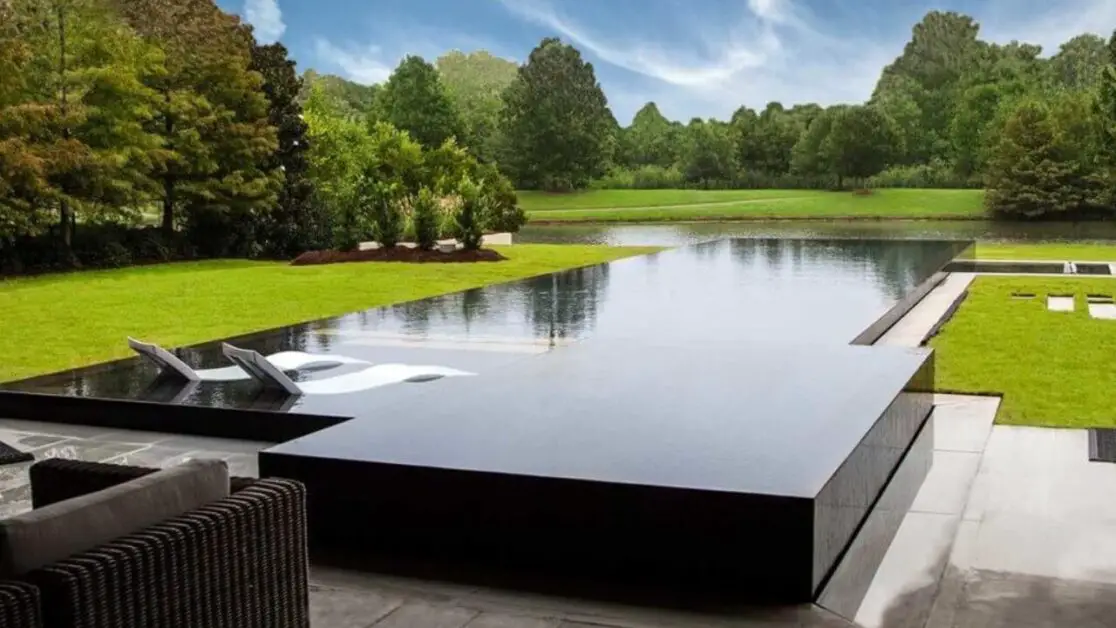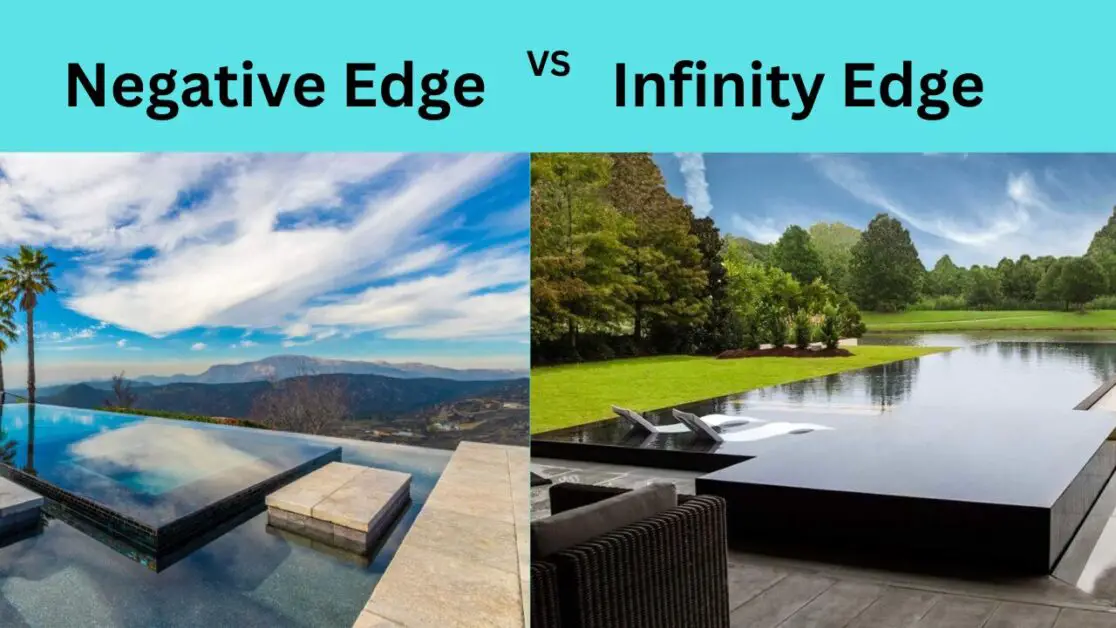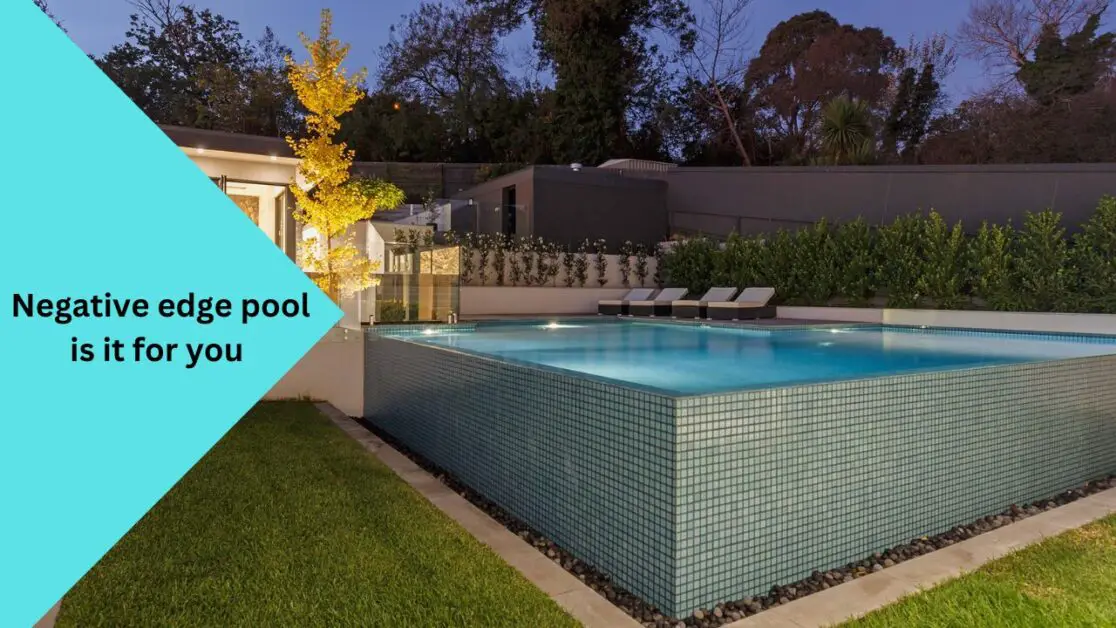Welcome to our in-depth guide on negative edge pools. Are you curious about how much a negative edge pool costs? Or perhaps you’re wondering what differentiates a negative edge pool from an infinity edge pool? Look no further! In this article, we will explore the cost of negative edge pools, the concept of infinity edge pools, and whether they are worth the investment. Additionally, we will discuss the characteristics of a pool with no edge and compare different pool styles in terms of cost. So, let’s dive into the world of negative edge pools and unravel their mysteries!
- What is a Negative Edge Pool?
- Benefits of Negative Edge Pools
- How Much Does a Negative Edge Pool Cost?
- Factors Affecting the Cost of a Negative Edge Pool
- Average Cost Breakdown
- Comparisons to Other Pool Styles
- How to Save Money on a Negative Edge Pool
- How Much is an Infinity Edge Pool?
- Comparing Negative Edge and Infinity Edge Pools
- Factors Impacting the Price Difference
- Is an Infinity Edge Pool Worth It?
- Determining if an Infinity Edge Pool is Worth It
- What is a Pool with No Edge Called?
- Similarities and Differences Compared to Negative Edge Pools
- What Style of Pool is Cheapest?
- Overview of Different Pool Styles and Their Costs
- Identifying the Most Cost-Effective Pool Style
- Conclusion
What is a Negative Edge Pool?

Negative edge pools, also known as vanishing edge, infinity edge, or zero edge pools, are a stunning and visually dramatic pool design concept. They create the illusion of water extending off into the horizon, seamlessly blending into the surrounding landscape. The primary feature that sets negative edge pools apart is the lack of a visible edge on one or more sides. Instead, the water flows over the perimeter, creating a captivating effect.
Benefits of Negative Edge Pools
Negative edge pools offer numerous benefits beyond their aesthetic appeal. Some of the advantages of owning a negative edge pool include:
- Enhanced Views: Negative edge pools are ideal for properties with breathtaking landscapes, such as oceanfront or mountain views. The absence of barriers allows for uninterrupted visual enjoyment.
- Relaxing Sound: The continuous flow of water over the edge produces a soothing sound that adds to the overall ambiance of the pool area.
- Illusion of Infinite Space: With the water seemingly merging with the horizon, negative edge pools create an illusion of vastness and infinity, making even modest-sized pools appear much larger.
- Increased Property Value: These pools are considered premium additions to any property, and their unique design can significantly boost its value.
Now that we’ve explored the benefits of negative edge pools, let’s move on to the aspect that interests many homeowners: the cost.
How Much Does a Negative Edge Pool Cost?
The cost of a negative edge pool depends on several factors, including the pool’s size, material, location, additional features, and labor costs. It is essential to note that exact prices can vary significantly based on individual preferences and regional market conditions. However, we can provide a breakdown of average cost ranges.
Factors Affecting the Cost of a Negative Edge Pool
- Size of the Pool:Naturally, larger pools will require more materials and labor, leading to higher costs. Additionally, bigger pools often demand more complex engineering and design considerations.
- Material Selection:The materials chosen for the pool’s construction play a significant role in overall costs. High-end materials like glass tiles or natural stone can add to the expenses compared to standard materials like plaster.
- Site Topography:The complexity of the terrain where the pool will be installed can affect the overall cost. A steep slope or uneven terrain may require additional excavation, leveling, or the implementation of retaining walls, increasing the project’s price.
- Additional Features:The inclusion of extra features such as waterfalls, spa areas, intricate lighting, or advanced filtration systems will naturally raise the overall cost of the negative edge pool.
Average Cost Breakdown
On average, the cost of installing a negative edge pool can range from $50,000 to over $200,000. However, it is essential to remember that these figures are estimates and can fluctuate significantly based on various factors.
- Basic Negative Edge Pool: A straightforward negative edge pool with standard features, a modest size, and commonly used materials can usually be installed for approximately $50,000 to $80,000.
- Mid-Range Negative Edge Pool: A mid-range negative edge pool offers slightly more design flexibility, additional features, and higher-quality materials. The cost for this type of pool typically falls between $80,000 and $150,000.
- Luxury Negative Edge Pool: For homeowners seeking the utmost extravagance and customization, luxury negative edge pools can cost upwards of $150,000 and even exceed $200,000. These pools encompass premium materials, intricate designs, and high-end features.
Comparisons to Other Pool Styles
When comparing negative edge pools to other pool styles, it’s important to note that negative edge pools generally fall into the higher price range due to their unique design and aesthetic appeal. However, they provide an unmatched visual experience that other pool styles cannot replicate.
How to Save Money on a Negative Edge Pool
While negative edge pools are undoubtedly an investment, there are ways to reduce costs without compromising the quality or visual impact of your dream pool. Consider the following tips to save money:
- Simplified Design:Opt for a straightforward design that minimizes complicated shapes or additional architectural elements, reducing construction costs.
- Alternative Materials:Seek out cost-effective alternatives to high-end materials. For example, choose porcelain tiles instead of expensive natural stone, or explore various options for pool coping and decking materials.
- Right-Sized Pool:Work closely with your pool builder to determine the right size for your needs. Avoid unnecessary expansions or scaling down to prevent unnecessary expenses.
- Limited Features:Consider prioritizing essential features and adding non-critical features at a later stage if budget constraints are a concern.
- Seek Multiple Quotes:Obtain quotes from different pool builders, ensuring you compare not only the prices but also their expertise, reputation, and customer reviews.
Remember, while cost is a significant factor, it is equally essential to focus on the long-term value and enjoyment a negative edge pool can bring to your property.
How Much is an Infinity Edge Pool?
Infinity edge pools, often mistakenly used interchangeably with negative edge pools, create a similar visual effect, giving the illusion of water extending into the horizon. However, there are slight differences between the two pool styles.
Understanding Infinity Edge Pools and Their Cost
Infinity edge pools, also known as vanishing edge or disappearing edge pools, share the same visual concept as negative edge pools. The edges of the pool are designed so that the water appears to spill over the edge, creating a seamless connection between the pool and the surrounding environment.
In terms of cost, infinity edge pools are typically priced slightly higher than negative edge pools due to their intricate engineering and design requirements. On average, the cost for an infinity edge pool falls within a range of $60,000 to $250,000.
Comparing Negative Edge and Infinity Edge Pools

The primary difference lies in the architectural design of the pool’s edges. Negative edge pools lack a visible edge on at least one side, while infinity edge pools have one or more sides where the water spills over, creating the illusion that the pool merges with the landscape. Both styles offer stunning visual effects and are highly sought after for their elegance and luxurious appeal.
Factors Impacting the Price Difference
The cost disparity between negative edge and infinity edge pools can be attributed to various factors:
- Engineering Considerations: Infinity edge pools often require more complex engineering to ensure the water flows properly over the edge, resulting in added costs.
- Design Complexity: The intricate design elements of infinity edge pools, such as multiple edges or cascading levels, contribute to higher overall prices.
- Materials and Finishes: The materials chosen for an infinity edge pool may differ from those used in a negative edge pool, leading to variations in cost.
- Customization: Infinity edge pools often allow for more customization options, allowing homeowners to personalize their pool further. Increased customization can affect the final price.
Is an Infinity Edge Pool Worth It?
Determining whether an infinity edge pool is worth the investment requires considering personal preferences, budget limitations, and expectations for long-term enjoyment. To help you make an informed decision, let’s examine the advantages and disadvantages of owning an infinity edge pool.
Advantages of Infinity Edge Pools
- Aesthetically Pleasing: Infinity edge pools create a truly captivating and dramatic visual effect, elevating the overall appearance of your property.
- Enhanced Views: If you have picturesque vistas or an attractive landscape, an infinity edge pool can provide an unobstructed view, allowing you to fully appreciate your surroundings.
- Unique Experience: An infinity edge pool offers a more immersive swimming experience. The illusion of boundless water extending into the distance adds a sense of grandeur and tranquility.
Disadvantages of Infinity Edge Pools
- Higher Costs: Infinity edge pools generally require additional engineering, intricate construction, and meticulous maintenance, resulting in higher upfront and ongoing costs.
- Design Limitations: While infinity edge pools offer stunning visual effects, their design may not be suitable for all properties or locations. Topography and site constraints can impact the feasibility of installing an infinity edge pool.
Determining if an Infinity Edge Pool is Worth It
To decide whether an infinity edge pool is worth the investment, you should consider the following factors:
- Budget: Evaluate your budget to determine if the added expense of an infinity edge pool aligns with your financial goals and long-term plans.
- Aesthetic Appeal: Consider the visual impact an infinity edge pool will have on your property. If enhancing the beauty of your surroundings is a priority, the investment may be justified.
- Property Location: Assess the suitability of your property for an infinity edge pool, taking into account site conditions, landscape views, and potential construction challenges.
- Lifestyle and Preferences: Reflect on how important the infinity edge pool experience is to you. If you value the unique swimming experience and have a deep appreciation for architectural elegance, it may be worth the investment.
Ultimately, the decision to invest in an infinity edge pool should be based on a careful evaluation of your priorities, budget, and desired long-term benefits.
What is a Pool with No Edge Called?
A pool with no edge is commonly referred to as a zero edge pool, vanishing edge pool, or disappearing edge pool. These terms are often used interchangeably to describe a swimming pool design where one or more edges of the pool lack a visible edge or barrier.
Similarities and Differences Compared to Negative Edge Pools
Negative edge pools and zero edge pools share a common characteristic: the absence of a visible edge on one or more sides. However, the terms “negative edge pool” and “zero edge pool” are not entirely interchangeable. Negative edge pools typically refer to pools where the water overflows on one side, creating a visually stunning effect. On the other hand, zero edge pools are constructed in a way that gives the impression of water extending infinitely, with no visible edge. This effect is achieved by designing the pool’s walls or edges to blend seamlessly with the surrounding environment.
Both pool styles offer a remarkable viewpoint and connectivity with the landscape, but zero edge pools often require more extensive engineering and attention to detail due to the nature of their design.
What Style of Pool is Cheapest?
When it comes to cost, the most affordable pool style depends upon several factors, including the geographical region, availability of materials, labor costs, and the scope of the project. Although cost is crucial, it’s essential to consider other factors such as aesthetics, maintenance requirements, and long-term value.
Overview of Different Pool Styles and Their Costs
- Above-Ground Pools:Generally, above-ground pools are the most budget-friendly option. Their installation costs are relatively lower compared to other pool styles, with an average price range of $2,500 to $15,000. However, the overall costs can increase depending on customization options, additional features, and the quality of materials used.
- Vinyl Liner Pools:Vinyl liner pools offer a balance between affordability and durability. They typically have a vinyl liner that acts as a barrier between the water and the pool structure. The average cost of a vinyl liner pool ranges from $20,000 to $35,000.
- Fiberglass Pools:Fiberglass pools are pre-fabricated and delivered to the construction site as a single unit. They boast quick installation times and require minimal ongoing maintenance. The cost of a fiberglass pool typically falls within a range of $30,000 to $70,000.
- Concrete (Gunite or Shotcrete) Pools:Concrete pools are highly customizable and offer unmatched versatility in terms of design. However, they tend to be more expensive upfront. The average cost of a concrete pool can range from $35,000 to over $100,000.
Identifying the Most Cost-Effective Pool Style
To identify the most cost-effective pool style, it’s crucial to consider your specific needs, budgetary constraints, and long-term goals. Evaluate the following factors:
- Initial Investment vs. Long-Term Costs:While certain pool styles may have lower upfront costs, they might require more maintenance and repairs over time. Consider the overall lifecycle cost to get an accurate understanding of the most cost-effective option.
- Aesthetics and Add-Ons:Determine the level of customization and additional features you desire. Some pool styles offer greater design flexibility, but this can increase the overall cost.
- Local Regulations:Check local building codes and regulations that may impact the pool style you can install. Some regions have limitations or requirements for certain pool styles.
- Professional Advice:Consult with experienced pool builders who can provide insights tailored to your specific situation.
By carefully considering these factors and seeking professional guidance, you can identify the pool style that offers the best value for your investment.
Conclusion
In conclusion, negative edge pools are a stunning addition to any property, creating an oasis of tranquility and enhancing the beauty of the surrounding landscape. While the cost of a negative edge pool can vary based on size, materials, and additional features, the average price range falls between $50,000 and $200,000. Infinity edge pools, with their captivating visual effects, are priced slightly higher due to their engineering complexity. It is crucial to assess your budget, personal preferences, and long-term goals when deciding whether an infinity edge pool is worth the investment.
Additionally, it’s important to understand the differences between negative edge and zero edge pools. Both offer unique design elements and the illusion of boundless water, but they achieve the effect in slightly different ways.
Ultimately, the most cost-effective pool style depends on various factors such as budget, geographical location, and individual needs. By carefully evaluating these aspects and seeking professional advice, you can make an informed decision that brings you joy, relaxation, and lasting value for years to come.

Greetings, fellow pool enthusiasts! I’m Turner Davis, your dedicated guide to the world of pool care and maintenance. With over a decade of experience in the field, I’ve made it my mission to transform ordinary pools into extraordinary aquatic retreats.

